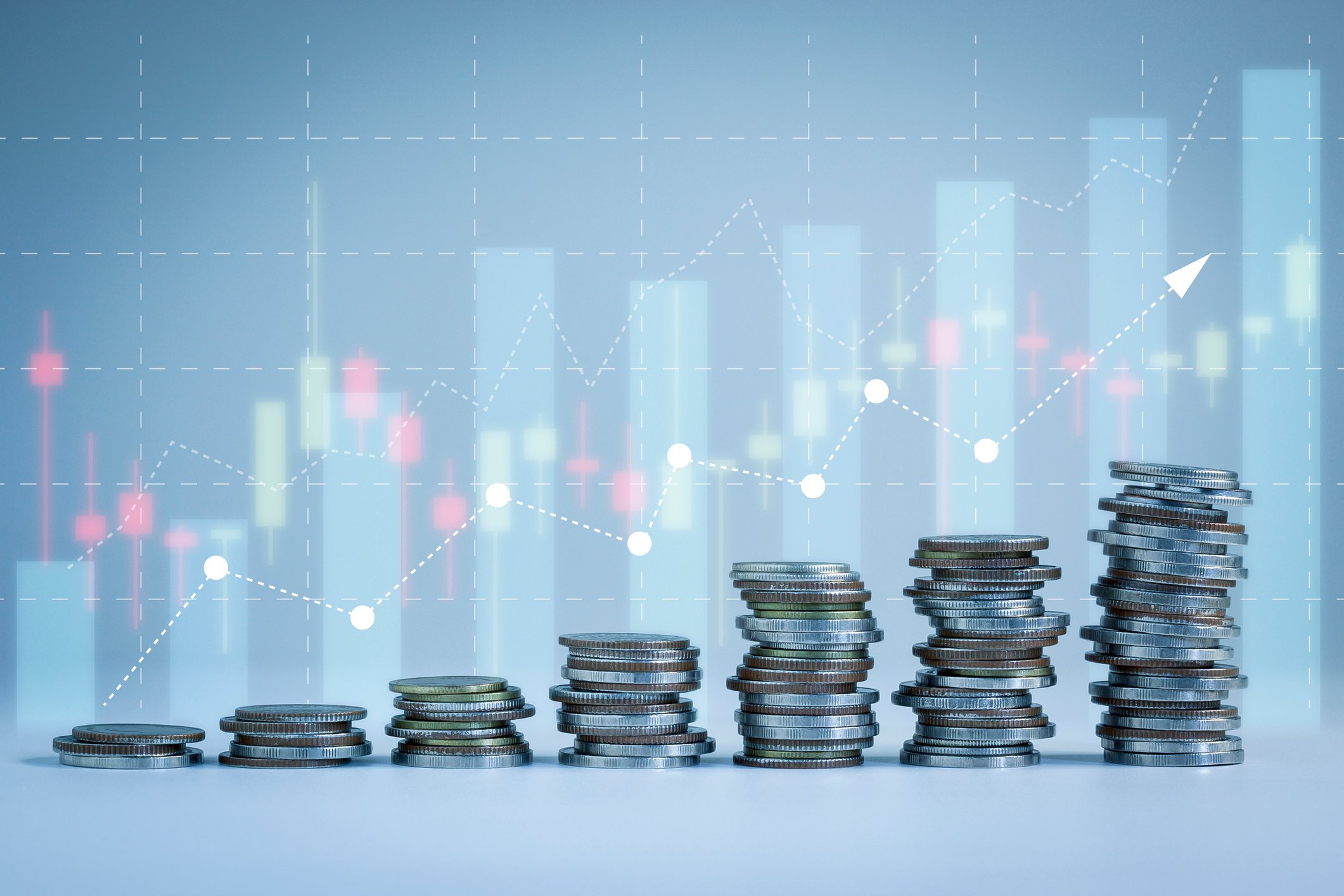Kinder Morgan (KMI 0.59%) has evolved over the years, shifting more of its focus toward natural gas. On top of that, it has put a priority on improving its financial profile. Because of those factors, it's a compelling option for income investors to consider. In this Industry Focus: Energy clip, host Nick Sciple and Fool.com contributor Matt DiLallo discuss:
- An overview of what Kinder Morgan does.
- The importance of natural gas to the company.
- Kinder Morgan's growth prospects.
- The sale of Kinder Morgan Canada and its impact on Kinder Morgan's balance sheet.
- The company's dividend growth potential post-2020.
To catch full episodes of all The Motley Fool's free podcasts, check out our podcast center. To get started investing, check out our quick-start guide to investing in stocks. A full transcript follows the video.
This video was recorded on Oct. 10, 2019.
Nick Sciple: The first one of those I want to talk about is Kinder Morgan. Folks not familiar with this company, it's North America's largest transporter of natural gas, refined products and carbon dioxide. It's the top independent storage terminal operator for those substances. When you look at Kinder Morgan off the top, what should investors be aware of with this company?
Matt DiLallo: It's one of the largest energy infrastructure companies. That gives it diversification. Its focus is natural gas. Natural gas being a cleaner burning fuel than oil, that's going to be very important for the company going forward, especially with the amount of natural gas we have. That's going to provide them with a lot of growth opportunities. It's going to be around a lot longer than oil, as far as their growth opportunity. I like them for that natural gas aspect.
Sciple: Yeah, natural gas, there's been a lot of pressure on the price of that product over time, and it's had the same lows for years and years. Does that have any impact on Kinder Morgan as a midstream player? Or are they very insulated based on their contracts around the price of that commodity?
DiLallo: They're basically insulated against natural gas, other than, as we mentioned in the first part of the show, the gathering and processing aspect of it. They've got a little bit of that. But for the most part, they have these long-term contracts with minimum volume contracts, which means they get paid whether or not hydrocarbons actually flow through their pipelines. They're roughly insulated.
The concern is the near-term growth. With natural gas being so low, there's not going to be as much of drilling for natural gas. That might crimp the band for new pipelines. It might make it less likely that they grow as fast as they could in the near term. But long-term, natural gas is really a compelling story.
Sciple: Yeah, it burns cleaner than coal and those other traditional power sources. That's where the grid is headed, certainly. When it comes to the new projects that Kinder Morgan is investing in, they have a number of projects set to come online in the Permian specifically. Can you talk a little bit about those, Matt, and what we should be paying attention to there?
DiLallo: Just in the past couple of weeks, they brought on the Gulf Coast Express pipeline, which is this long haul and natural gas pipeline that will transport two billion cubic feet of gas per day from the Permian. To put that in perspective, as we mentioned earlier, the Permian was flaring like 500 billion cubic feet. It'll help absorb most of that, and then give the industry room for growth. It's completely fee-based. 100% of the capacity is locked up. It's a great project for Kinder Morgan. They're going to collect these steady fees. That's the first one.
And then they've got another one that's set to come online next year, called the Permian Highway pipeline. Very similar. I think it's about 2.1 billion cubic feet of capacity. A little bit different location, along the Gulf Coast, but very similar type of idea and concept, taking all that associated natural gas out of the Permian that producers are wasting and bringing it to market outlets.
Then they have a third one that's called Permian Pass that's in development. It's not in their backlog right now. But given the amount of growth that the region's expected, it's probably locked to be green lighted within the next year or so, would be my guess. Kinder Morgan CEO, Steve Kean, commented on the conference call, said that they need basically a Gulf Coast Express pipeline per year. That tells you that they're going to need this Permian Pass eventually.
And then, they've got a bunch of other projects related to that, the downstream. They have all this gas flowing to the Gulf Coast that needs an outlet. It's going to go to petrochemical complexes, it's going to go to LNG export facilities, utilities. They're involved along the Gulf Coast region, which is where all this gas is going to pour into.
Sciple: At the same time that they've been investing in all these new projects, as there's huge demand with all this natural gas and oil coming out of the Permian, they've also been divesting from some of their older assets in Canada. Can you talk a little bit about that? I know that's been something that played out over a number of years, and they've finally gotten those assets off their back a little bit.
DiLallo: Yeah. Kinder Morgan initially thought that Canada was going to be a great place to invest in growth wise. They had this pipeline called the Trans Mountain pipeline that took oil from the oil sands out to the west coast. It's the only one that does that. They were going to expand the capacity by three times. However, they ran into a lot of opposition. It became such a headache that they ended up selling it to the government of Canada. That's led them to look for options for the rest of their Canadian assets. They ended up packaging, they have a publicly traded company called Kinder Morgan Canada, they sold that to another pipeline company called Pembina Pipeline in an all-stock deal. Kinder Morgan owned 70% of that, so they're going to get Pembina stock. And then they sold a related pipeline called Cochin pipeline that takes, they call it diluent, and what it does is, it helps take that really molasses-like oil that they produce in the oil sands, and it helps dilute it so that it flows through pipelines. They sold those projects and pipelines and all that to Pembina. They'll get cash for it. That gives them money to pay down debt, and then, the Pembina stock that they'll probably cash in on in the next year or so. They could use that to buy back stock or invest in new projects.
Sciple: You mentioned paying down some of that debt. Kinder Morgan does tick up a little bit above that 4X EBITDA number you like to see out of a midstream company. Any thoughts on that leverage level and how that's progressing over time?
DiLallo: It was like 5.9X a couple of years ago. That was way too high. They've gotten it down to, after the sale, 4.4X. That's a much more comfortable level. That's actually within their comfort zone because they're such a big company and have so much fee-based cash flow. They're not as concerned with a 4.0X number that I would like to see. I wouldn't mind if they pushed it down a little bit more, but it's still a comfortable balance sheet.
Sciple: Sure. Last thing on Kinder Morgan. Looking out at their dividend, they cut their dividend significantly in 2015, but they've started ticking it back up over recent years. They announced a plan in 2017 where they would raise their dividend 60% in 2018, 25% in 2019, and another 25% in 2020. What's the trajectory on dividend increases past that framework that they've laid out? What should we be paying attention to there from the company?
DiLallo: When they sold the Trans Mountain pipeline, they said that their aim is to secure $2-$3 billion of new projects each year. At the low end, that would enable them to grow their earnings by about 4% per year. At a minimum, I would expect that they could do that low-to-mid-single-digit dividend growth going forward. I think that's a safe area. They're going to cover their payout by about 50%. So, kind of like Plains, it's very safe dividend. It's got a good yield. I think it'll be maybe 5% per year going forward, which isn't amazing, but it's still pretty solid.
Sciple: Sure. When you own the backbone of U.S. natural gas infrastructure, with the way that is projected to move going forward, it seems like it could be a high-probability bet for some income going forward.






